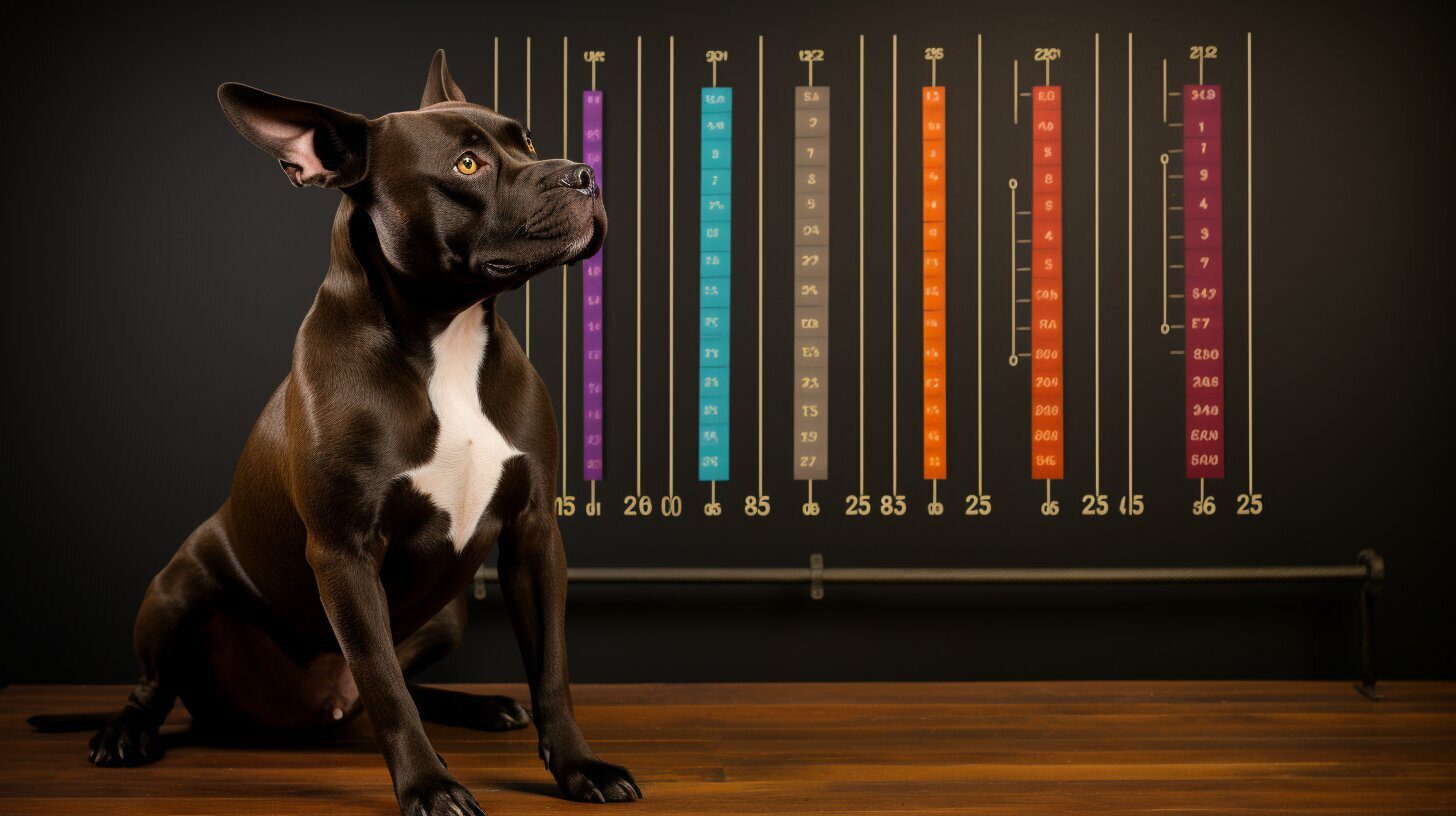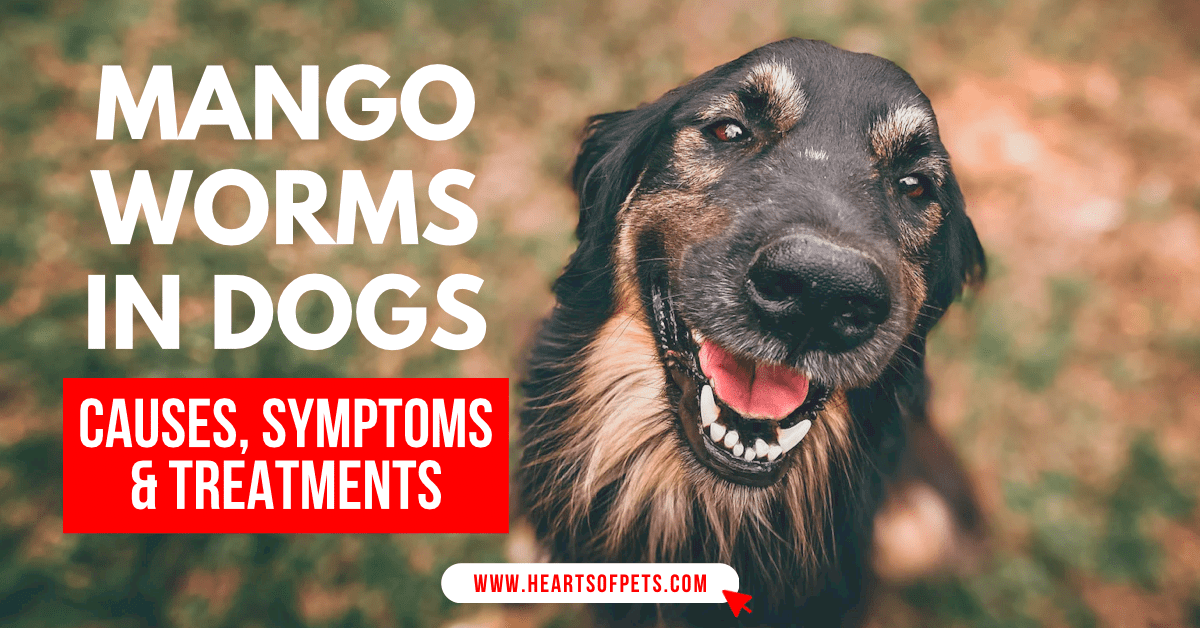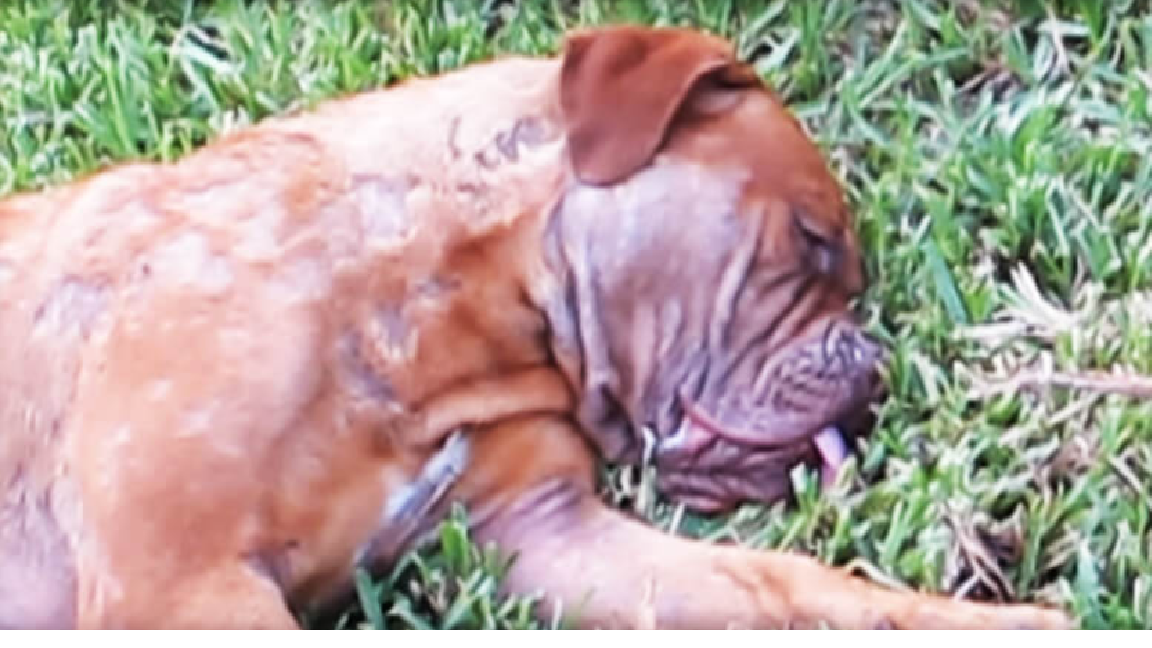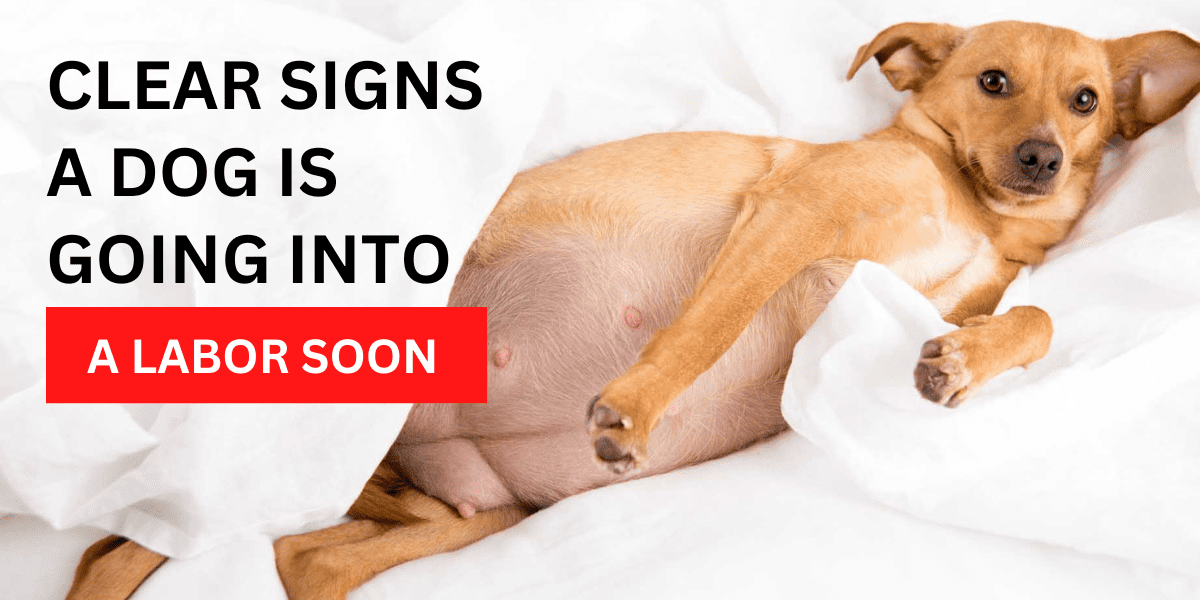
There’s nothing quite like the anticipation of a new dog in the family. If you’re lucky enough to have a pregnant dog at home, you’re probably counting down the days until she gives birth. Many dog owners don’t know what to expect when their dog goes into labor. But how can you tell when labor is about to begin?
How Long is a Dog Pregnancy?
The average dog pregnancy lasts anywhere from 58 to 68 days. However, this is just an average, and some dogs may give birth as early as 56 days or as late as 72 days after conception. To get a more accurate estimate of your pup’s due date, you’ll need to take into account the date of their last heat cycle. The heat cycle is the period of time during which a female dog is fertile and able to mate.
During the heat cycle, there are four phases:
Proestrus
The first stage of the heat cycle is called proestrus and lasts 9-12 days. During this time, your dog’s vulva will swell and she may have a bloody discharge. You’ll also notice that she’ll start urinating more frequently in order to mark her territory. However, she won’t be receptive to mating just yet.
Estrus
The second stage is called estrus and lasts anywhere from 5-13 days. This is when your dog is most fertile and can mate with a male dog. Her vulva will swell even more during this stage and her discharge will change from bloody to clear or straw-colored. You may also notice that she’s more restless than usual and has a decreased appetite.
Diestrus
If your dog mates during estrus, she’ll enter the third stage called diestrus. This stage lasts 60-90 days and is when your dog is pregnant. If she doesn’t mate, she’ll still enter this stage, but it’ll only last about 10-12 days. During diestrus, her vulva will return to normal size and her discharge will stop altogether. She’ll also gain weight and have an increase in appetite as her body prepares for pregnancy.
Anestrus
The final stage is called anestrus and lasts around 3 months. This is the resting phase between heat cycles where your dog’s body starts to prepare for her next heat cycle. Her vulva will be back to normal size and there will be no discharge during this phase.
To determine how far along your pup’s pregnancy is, count back from their last heat cycle. For example, if their last heat cycle was in January and it’s now March, they would be about two months pregnant (60-90 days).
If you’re still unsure about how far along your pup’s pregnancy is, you can always consult with your veterinarian for more information.
Stages of Pregnancy
During the early stages of pregnancy, your dog’s body is preparing for the developing puppies. The placenta and umbilical cord begin to form, and the puppies’ hearts begin to beat. Your dog’s nipples may also become more enlarged and darker in color.
You may not be able to see any physical changes in your dog during the early stages of pregnancy, but she may start to gain weight. She may also have a change in appetite, becoming either more ravenous or losing her appetite altogether. You might also notice that she becomes more affectionate or less so than usual.
As the pregnancy progresses, you’ll begin to see physical changes in your dog. Her abdomen will start to enlarge as the puppies grow. During the last few weeks of pregnancy, you may be able to see and feel the individual puppies moving around inside her womb.
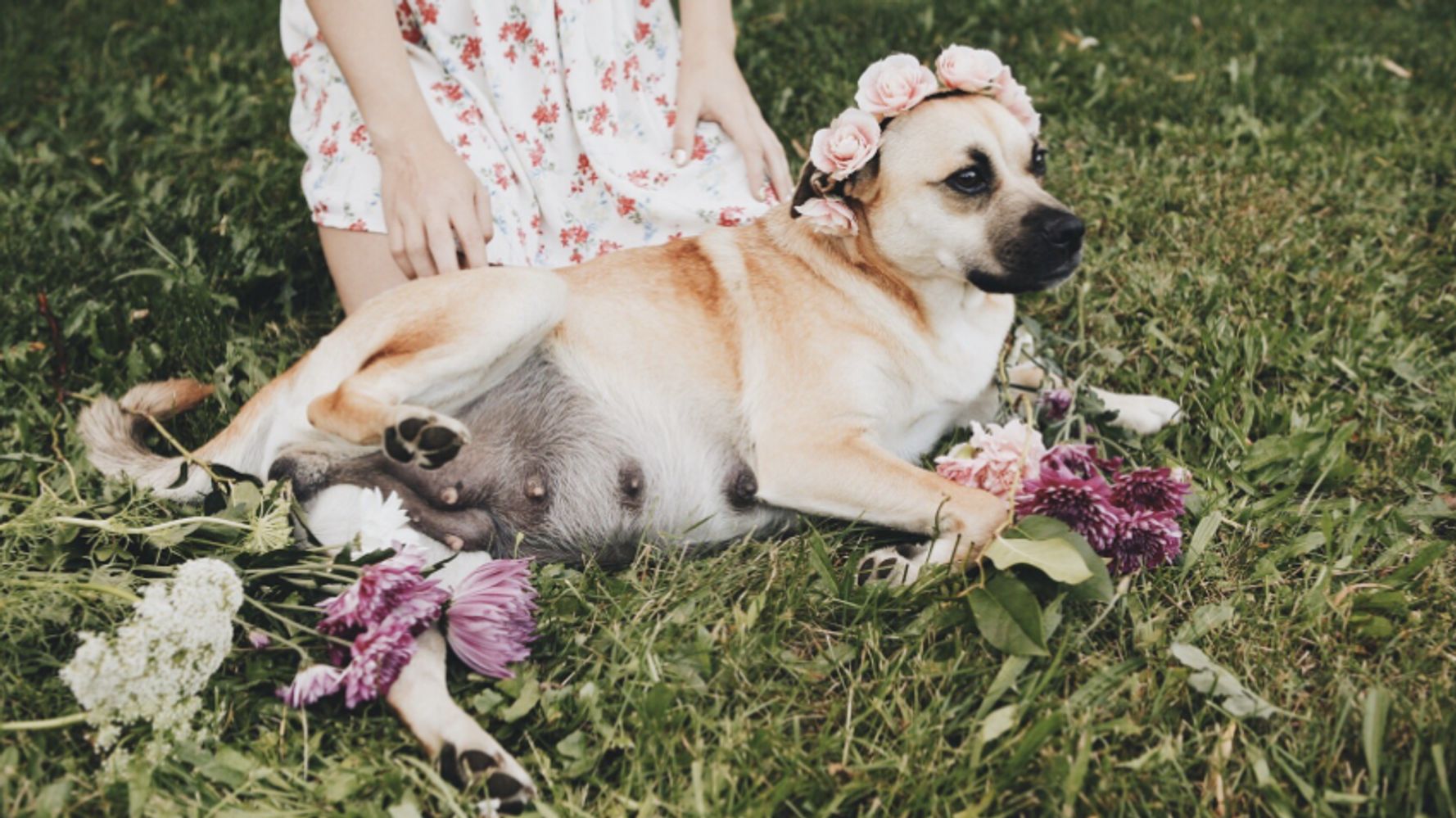
Pre-Labor and Labor
The final stage of pregnancy is pre-labor and labor, when your dog’s body is getting ready for delivery.
Signs a Dog is Going into Labor Soon – What You Should Know
For first-time dog owners, the process of labor and delivery can be a bit of a mystery. While every dog is different, there are some common signs that indicate that your furry friend is about to become a mother. Here are a few things to look out for.
1. Nesting Behavior
Just like human mothers-to-be, dogs will often start nesting as their due date approaches. This means they may start rearranging their bedding or trying to make themselves a comfortable nest in another area of the house. If you notice your dog spending more time than usual making her bed just right, it could be a sign that labor is imminent.
2. Loss of Appetite
It’s not uncommon for dogs to lose their appetite in the days leading up to labor. This is because they may be nervous or uncomfortable as their bodies prepare for childbirth. If your dog stops eating or only picks at her food, it could be a sign that she’s getting ready to give birth.
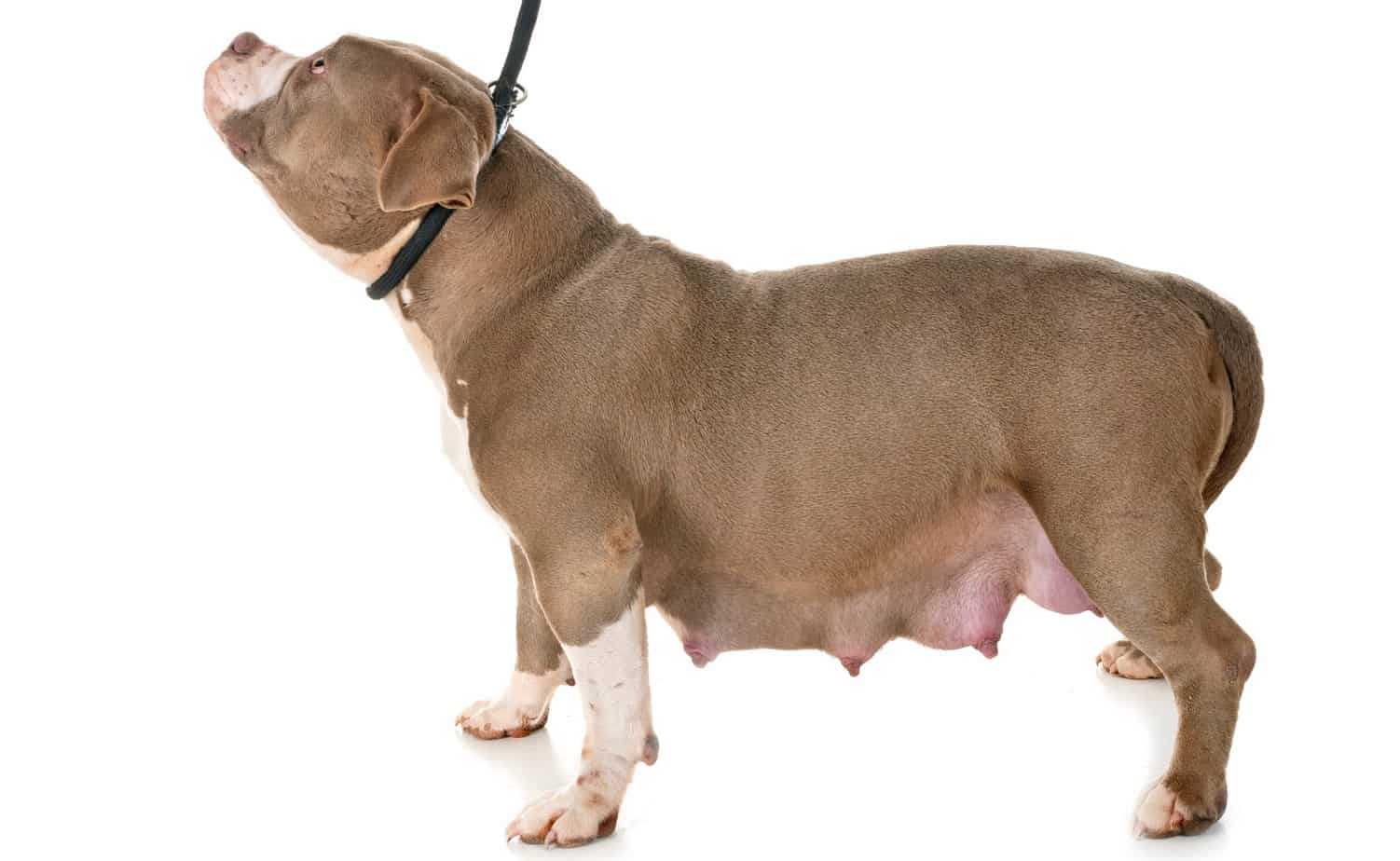
3. Panting and Pacing
As labor approaches, your dog’s temperature will drop and she may start panting heavily or pacing back and forth. This is caused by an increase in adrenaline as her body gets ready for childbirth. If you notice your dog doing either of these things more than usual, it could mean that she’s going into labor soon.
4. Restlessness and Agitation
Like humans, dogs may become agitated or restless as they approach labor. This is caused by hormone changes and the increased pressure on their bladder as the puppies continue to grow inside them. If your usually calm dog starts pacing or seems on edge, it could be a sign that labor is approaching.
5. Contractions
One of the most obvious signs that a dog is going into labor is contractions. These are caused by the relaxation of the muscles in the uterus as it begins to open up for delivery . If you notice your dog squatting and straining with no results, she may be experiencing contractions.
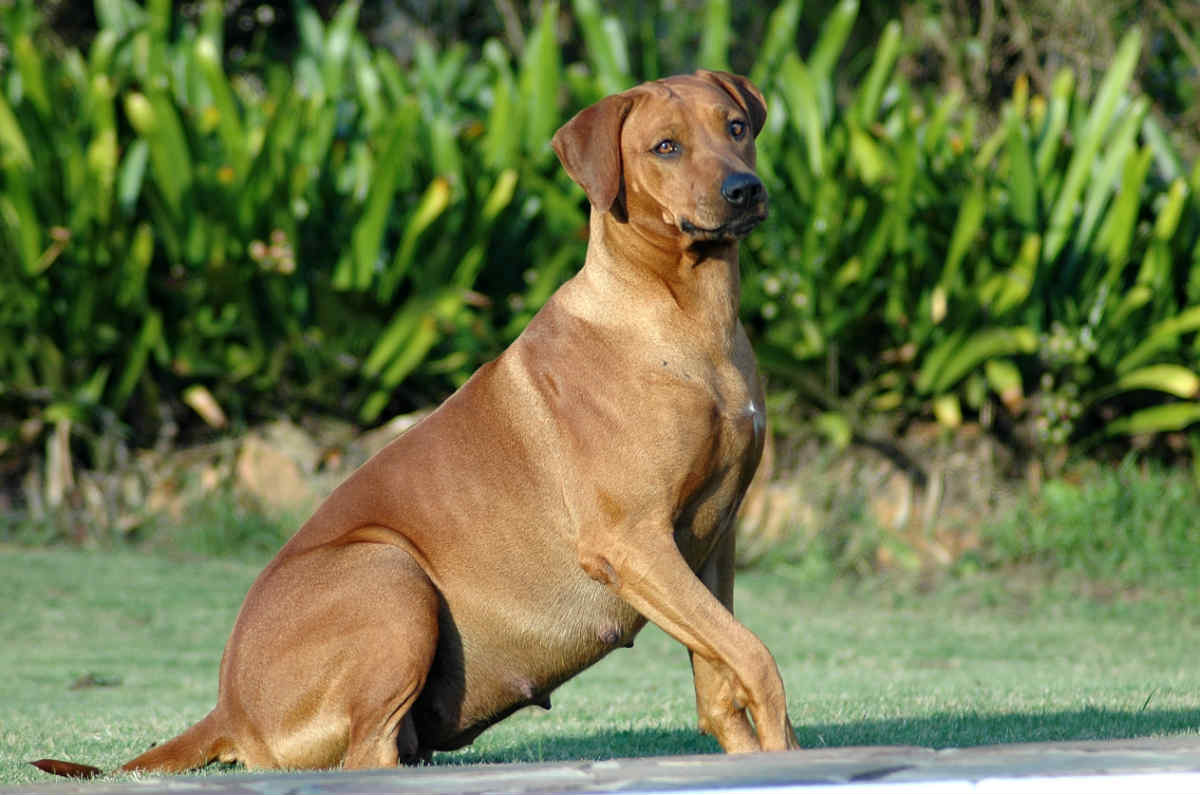
6. Discharge
Another sign that labor is imminent is discharge from the vulva. This discharge may be clear, pink, or slightly bloody and can indicate that delivery is close. If you notice any type of discharge, contact your veterinarian immediately.
7. Acting Differently Around People
Some dogs become more affectionate while others become more distant as they approach labor. This change in behavior is caused by hormonal changes and the instinct to protect their coming litter. If your dog seems to be acting differently around people, it could mean that she’s getting ready to give birth.
As mentioned earlier, pregnancy in dogs usually lasts between 58 and 68 days, so if you think your dog might be pregnant, it’s important to keep an eye out for these signs a dog is going to labor soon. By knowing what to look for, you can be prepared when your furry friend has her big day.
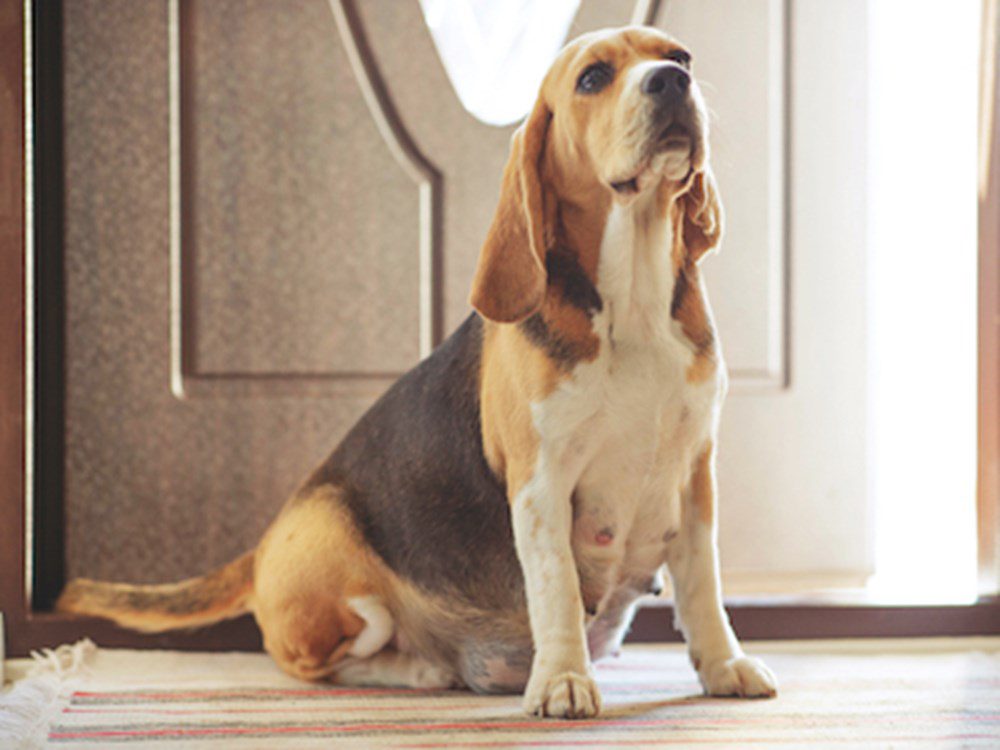
Stages of Labor
The First Stage of Dog Labor: Prodromal Labor
The first stage of labor is prodromal labor, which can last anywhere from 12 to 24 hours (and sometimes even longer). During this phase, your dog’s body is getting ready for childbirth by contracting the muscles of the uterus. These contractions help to push the puppies into the birth canal.
You may notice that your dog is restless during this phase and may want to nesting or digging. She may also pant more than usual and seem uncomfortable. This is all normal behavior. Just make sure that she has a comfortable place to nest and keep an eye on her temperature—you don’t want her to get too hot or too cold.
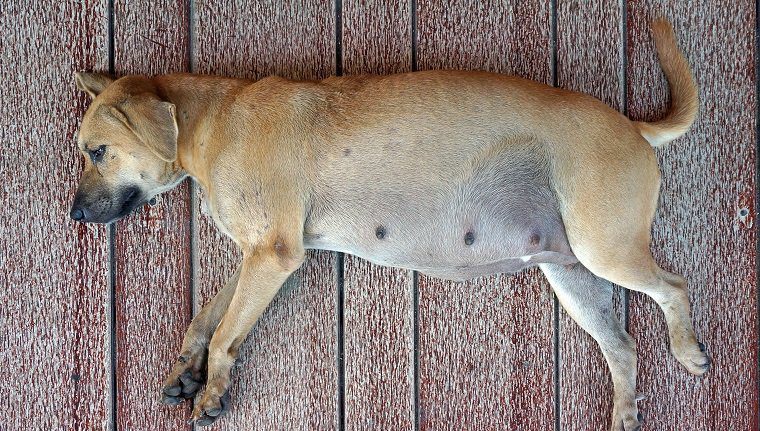
The Second Stage of Dog Labor: Active Labor
The second stage of labor is when things start really happening! Your dog’s cervix will fully dilate and she will begin pushing puppies out into the world. This stage can last anywhere from 30 minutes to 2 hours (or even longer).
Breathe easy—the hardest part is almost over! Just remember to give your dog plenty of space and don’t try to intervene unless something seems wrong. In most cases, things will progress just fine on their own.
If you’re concerned that your dog isn’t making progress or if she seems in pain, though, don’t hesitate to give your veterinarian a call. They will be able to offer guidance and advice specific to your situation.

The Third Stage of Dog Labor: Afterbirth
After all of the puppies have been born, there’s one more thing left to do: expel the placenta (aka the afterbirth). This usually happens within 30 minutes of the last puppy being born but can take up to 2 hours. Once again, don’t try to intervene unless something seems wrong—in most cases, everything will happen as it should.
You should now be familiar with the three stages of dog labor. Even for long time dog owners, dog labor is still nerve-wracking for them. Nevertheless, by being knowledgeable on what happens and what to expect during labor, you can prepare in advance and secure a safe delivery for your dog.
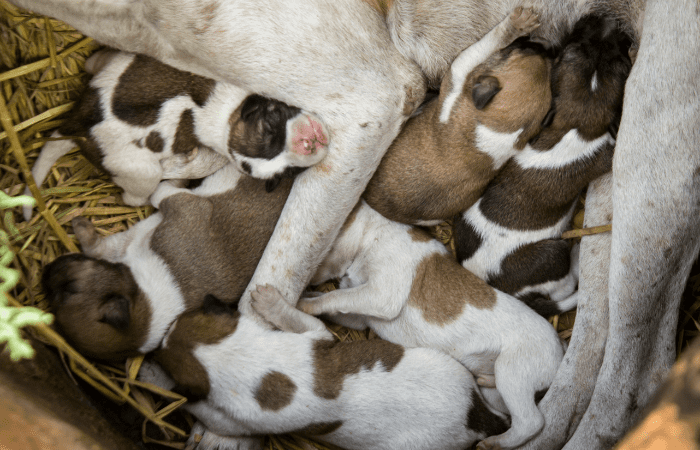
How Can You Prepare for Your Dog’s Labor?
Preparing for your dog’s labor doesn’t have to be stressful! After all, when the time comes for your furry friend to have puppies, you want to do everything you can to ensure a smooth and successful labor. By following these simple tips, you can help guarantee that everything goes smoothly and your furry friend has a healthy litter of puppies!
1. Choose a quiet and calm location for your dog to give birth. This could be a spare bedroom or even a bathroom. Just make sure that the area is large enough for your dog to move around comfortably and that it can be easily cleaned up afterwards.
2. Line the chosen area with old towels or sheets. This will help to absorb any blood or fluid during labor and delivery and make cleanup much easier later on.
3. Set up a whelping box or make sure that there is a bed available for your dog to lie on during labor. This will provide a comfortable surface for her to rest on and give birth.
4. Fill a clean bowl with fresh water and place it within reach of your dog. She will likely be thirsty during labor and delivery, so it’s important to have water readily available.
5. Have some high-quality puppy food on hand in case your dog goes into labor early or unexpectedly. This will help to ensure that she has the energy she needs to get through labor and delivery safely.
6. Make sure that you have your vet’s phone number handy in case of any complications during labor or delivery. It’s always better to be safe than sorry!
7. Most importantly, try to stay calm! Your dog will sense your anxiety and it could make her more stressed out than she needs to be. If you’re feeling calm, cool, and collected, chances are she will too.
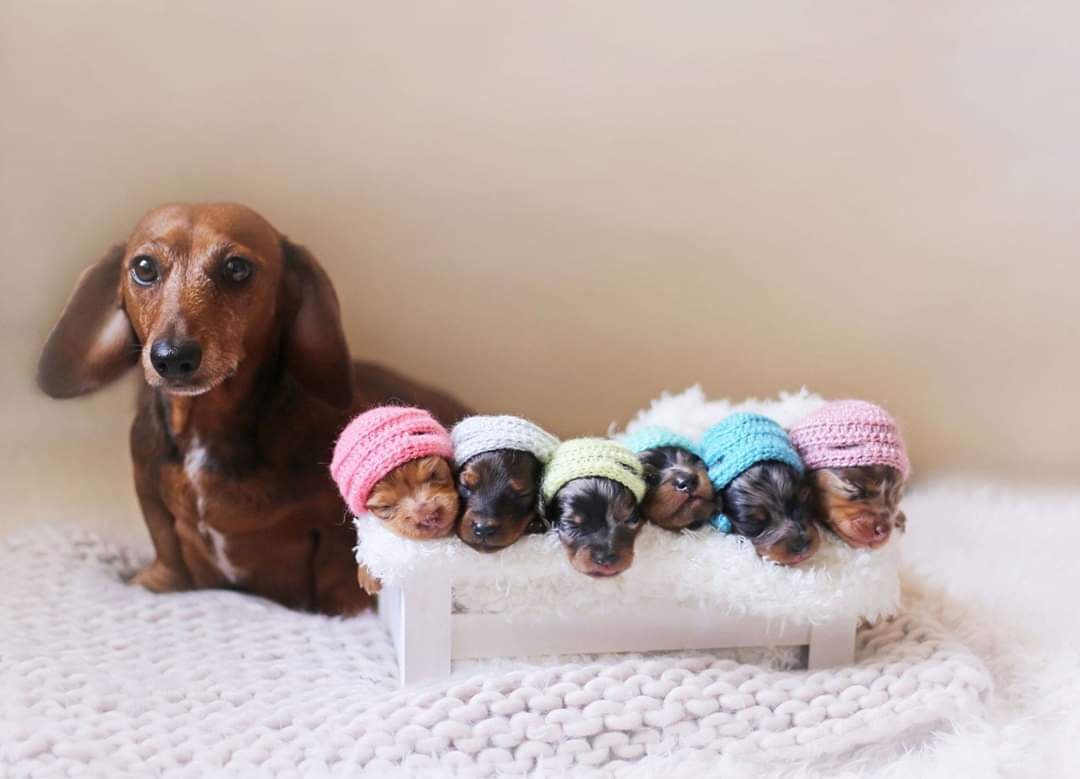
And finally, congratulations! You’ve got additional members in your family! While this time can be exciting, it’s also important to be prepared for your dog’s labor. This process can take anywhere from a few hours to a few days, so it’s important to know what to expect and have everything you need on hand.
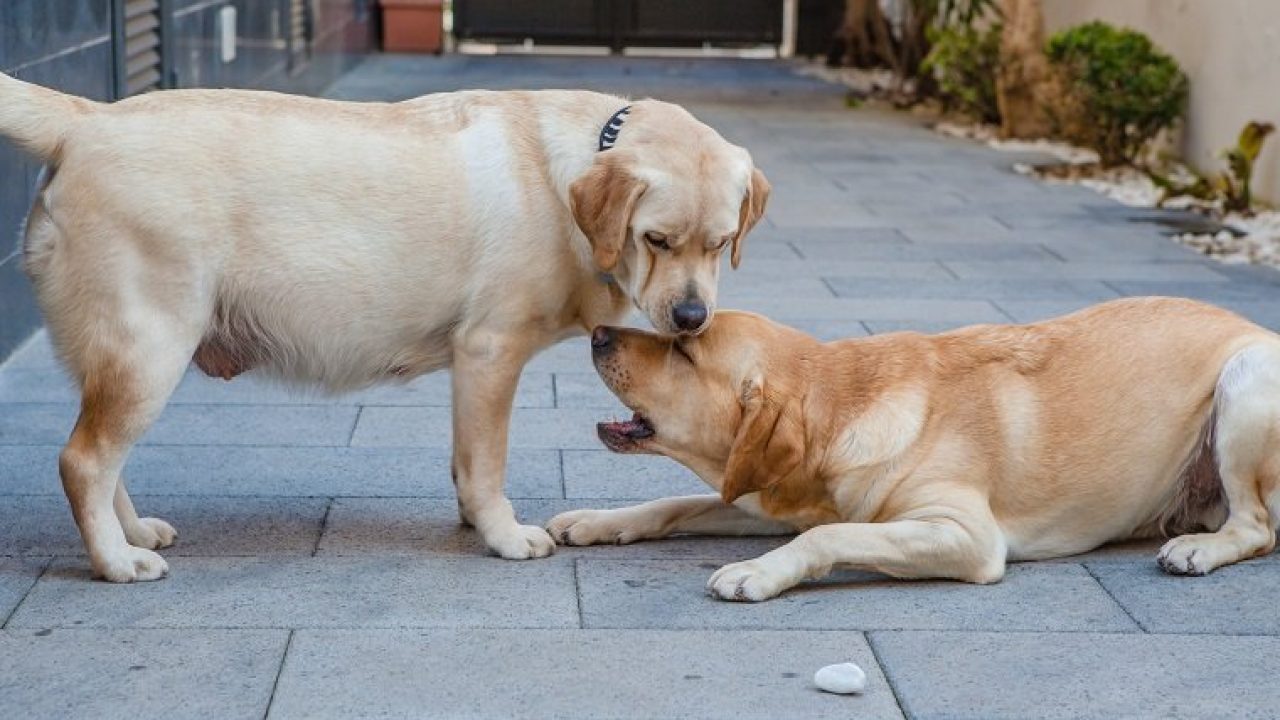
After Your Dog Delivers: Now What?
You are now the proud owner of adorable and bouncing fluffy puppies! Whether this is your first time experiencing the joys (and challenges) of pup-parenthood, or you’re a seasoned pro, it’s important to know what to do in the crucial days and weeks after your dog delivers. Let’s take a look on what you should do.
The First Few Days
The first few days after delivery are generally considered the most critical, as this is when your dog and her puppies are at highest risk for complications. It’s important to keep a close eye on both mom and pups during this time, checking for any signs of illness or distress.
Puppies born before day 58 of gestation are considered premature and are especially vulnerable; if you have a premature pup, be sure to consult your veterinarian right away. Puppies who are small, lethargic, or have trouble nursing should also be seen by a vet as soon as possible.
For all other newborns, common issues in the first few days include low blood sugar (hypoglycemia), hypothermia (low body temperature), dehydration, and trouble nursing. If you notice any of these issues, call your veterinarian immediately.
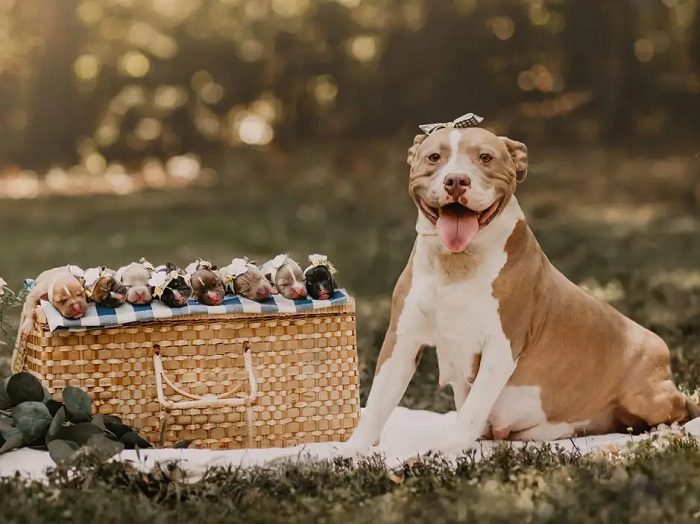
Taking Care of Mom
In the days and weeks after delivery, your dog will need extra care and attention to help her recover from childbirth and ensure that she is able to adequately care for her pups. Here are a few things you can do to help:
- Feed her small meals frequently throughout the day rather than one large meal. This will help her digest food more easily and prevent vomiting or diarrhea.
- Give her plenty of clean water at all times; dehydration can be dangerous for recovery.
- Avoid letting her get too hot or too cold; extreme temperatures can stress her body and delay healing.
- Keep her calm and quiet; too much activity can increase bleeding and delay healing. Provide a soft bed in a quiet room for her to rest in during the early days post-delivery.
Caring for your newly expanded canine family is a big responsibility, but it’s also an incredibly rewarding experience. By being prepared and knowing what to expect in the days after your dog delivers, you can set both mom and pups up for a happy and healthy start to life together.
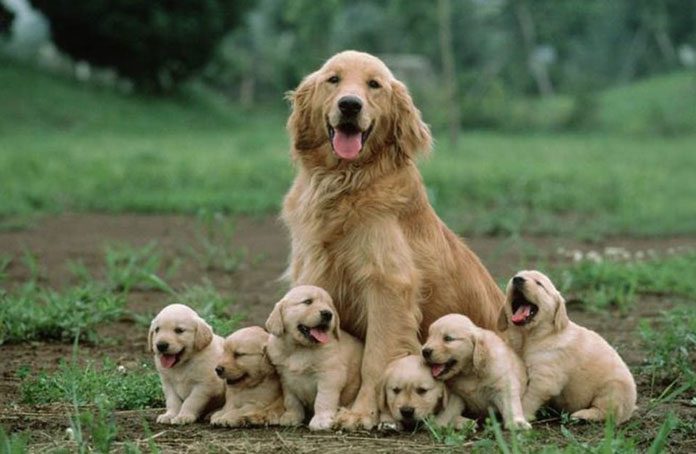
Conclusion
To wrap up, taking care of a dog is a huge responsibility, especially at times when they are pregnant and experiencing labor. But by familiarizing yourself with the signs of approaching labor, you can help make the delivery process go as smoothly as possible for both you and your furry friend. Just remember to stay calm and call the vet if you have any concerns along the way.
Frequently Asked Questions (FAQs)
Q. How Can You Tell if a Dog is Dilated?
Your dog will show visible symptoms of discomfort during the painful contractions that accompany cervix dilation. Check to see whether she is shivering or panting; this is a surefire indication that she has dilated.
Q. Does a Dog’s Water Break?
The rupture of the chorioallantoic sac, often known as the water breaking, is one of the unmistakable indicators that your dog is about to give birth. Normally, this happens at the end of the first stage of labor. The second stage of labor, when mom starts to actually deliver the puppies, starts with a watery discharge.
Q. What Does a Dog’s Mucus Plug Look Like?
Typically, it appears as a whitish fluid. The mucus plug of a dog is described by veterinarian Dan Rice in the book The Complete Book of Dog Breeding as a clear, odorless discharge that can be stringy and resemble egg whites.
Q. When Can You Touch a Newborn Puppy?
About three weeks after birth, the puppies start to move about independently. You can start petting them and interacting with them more at this point. If a newborn puppy appears sick, its mother abandons it, or the dog is orphaned, that’s when you should only touch or pick it up.


